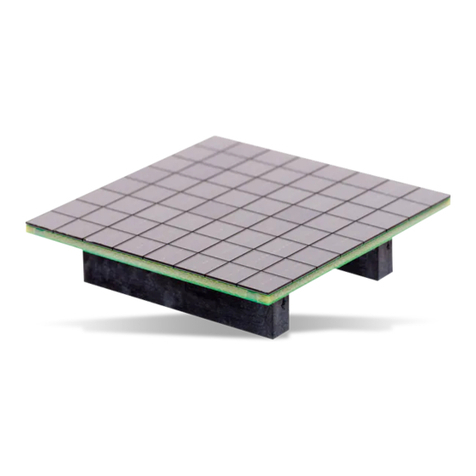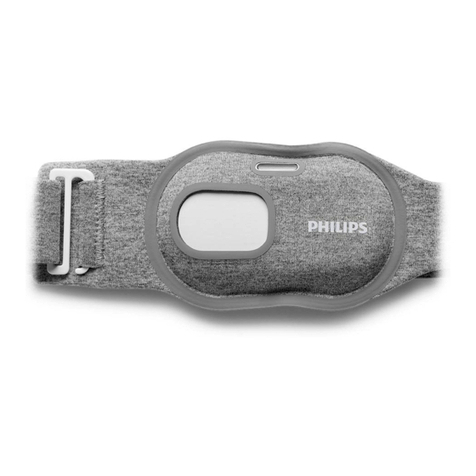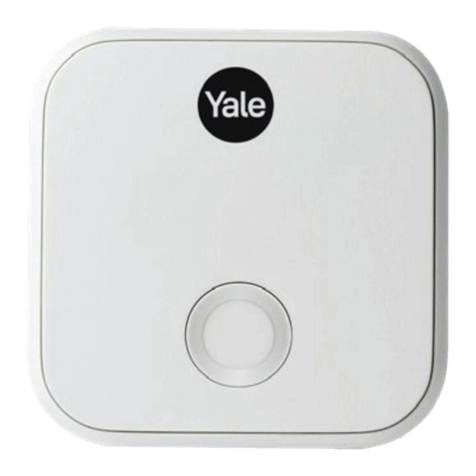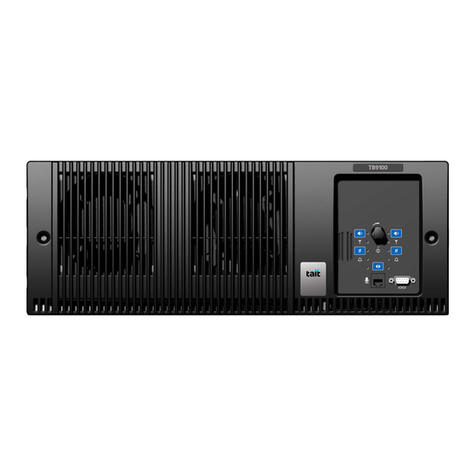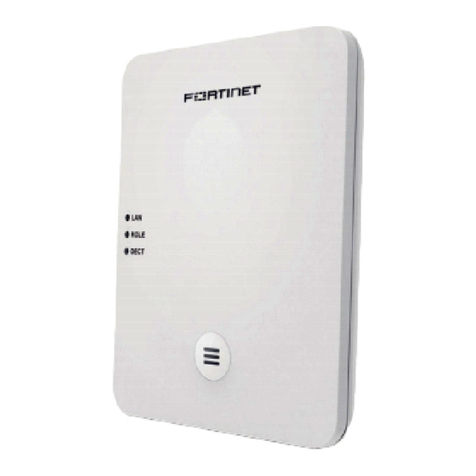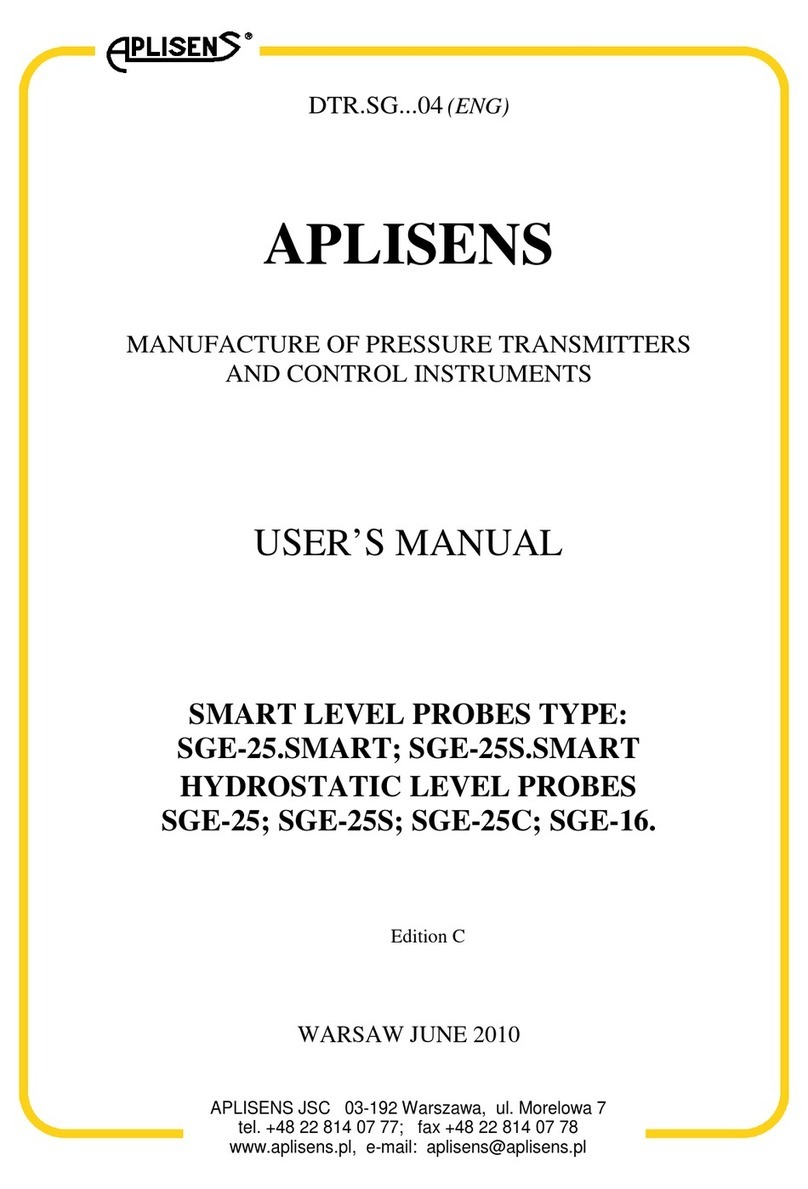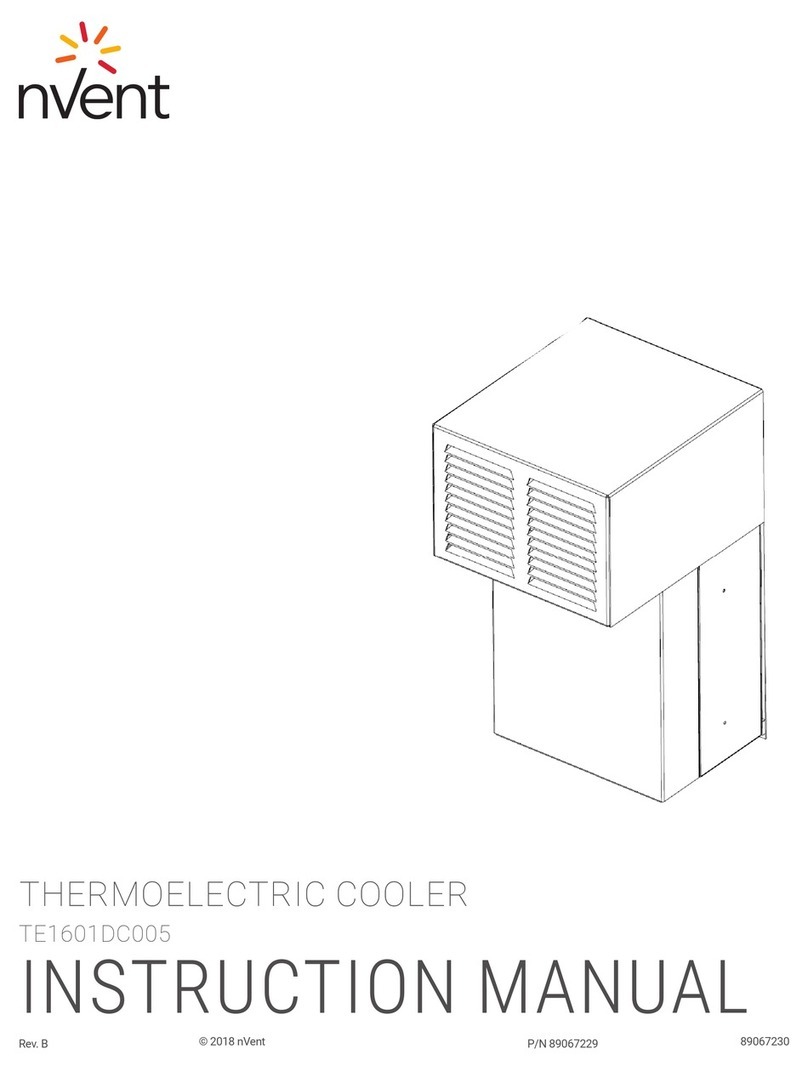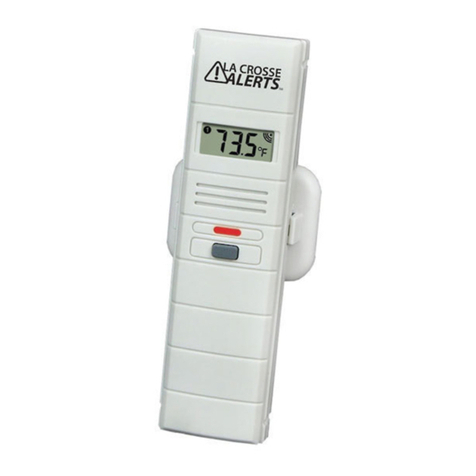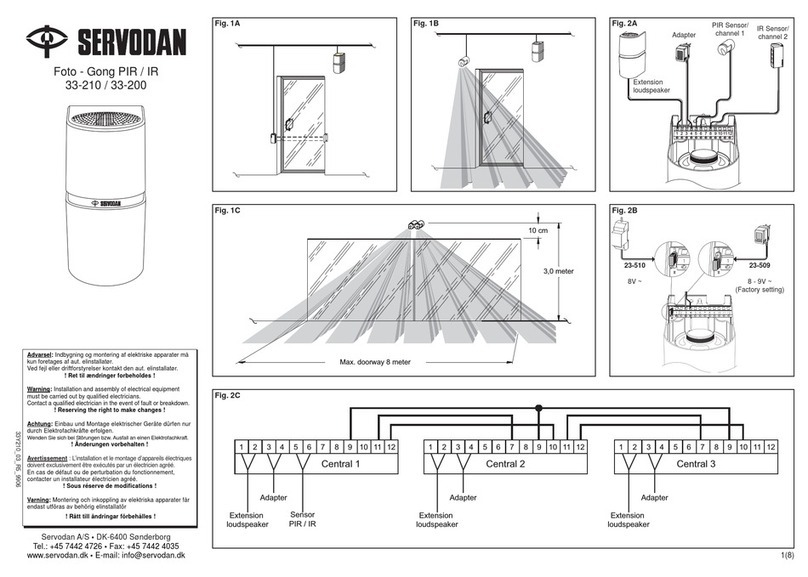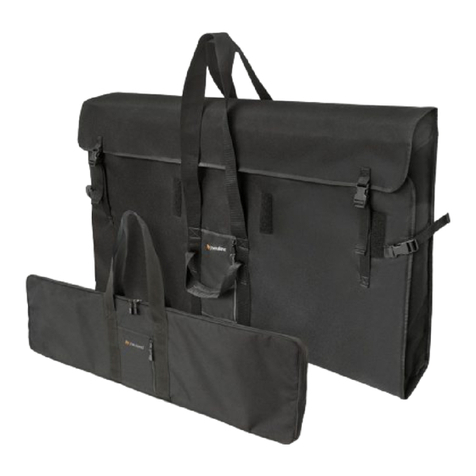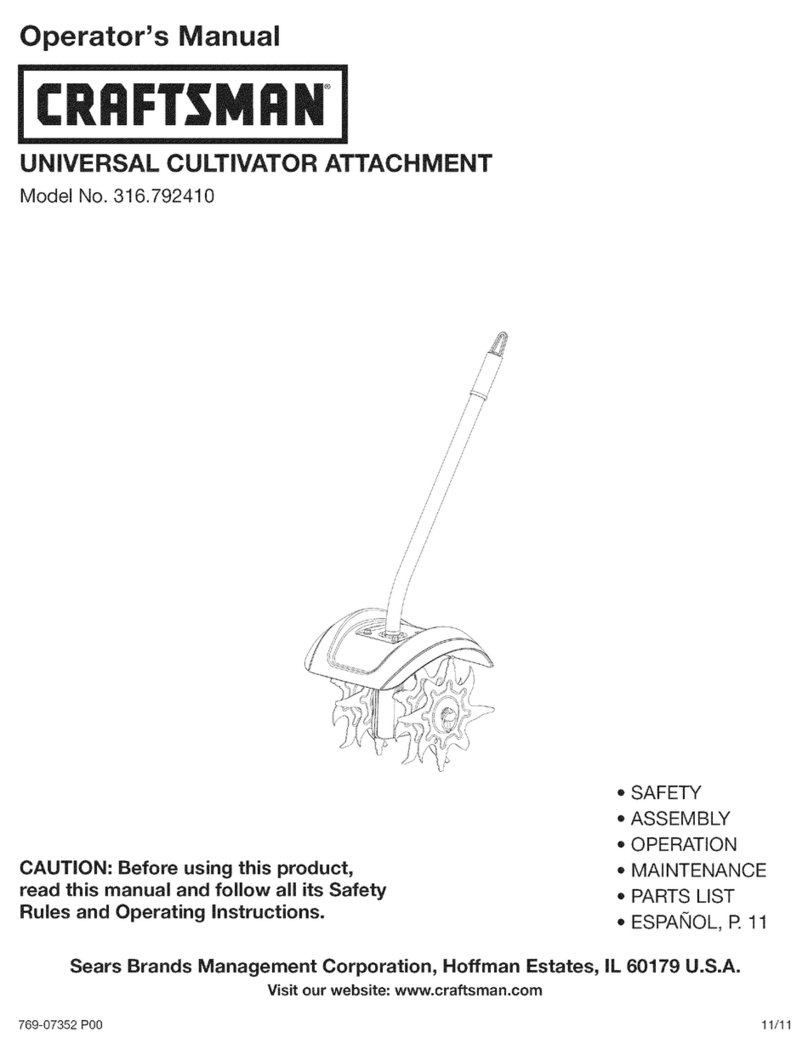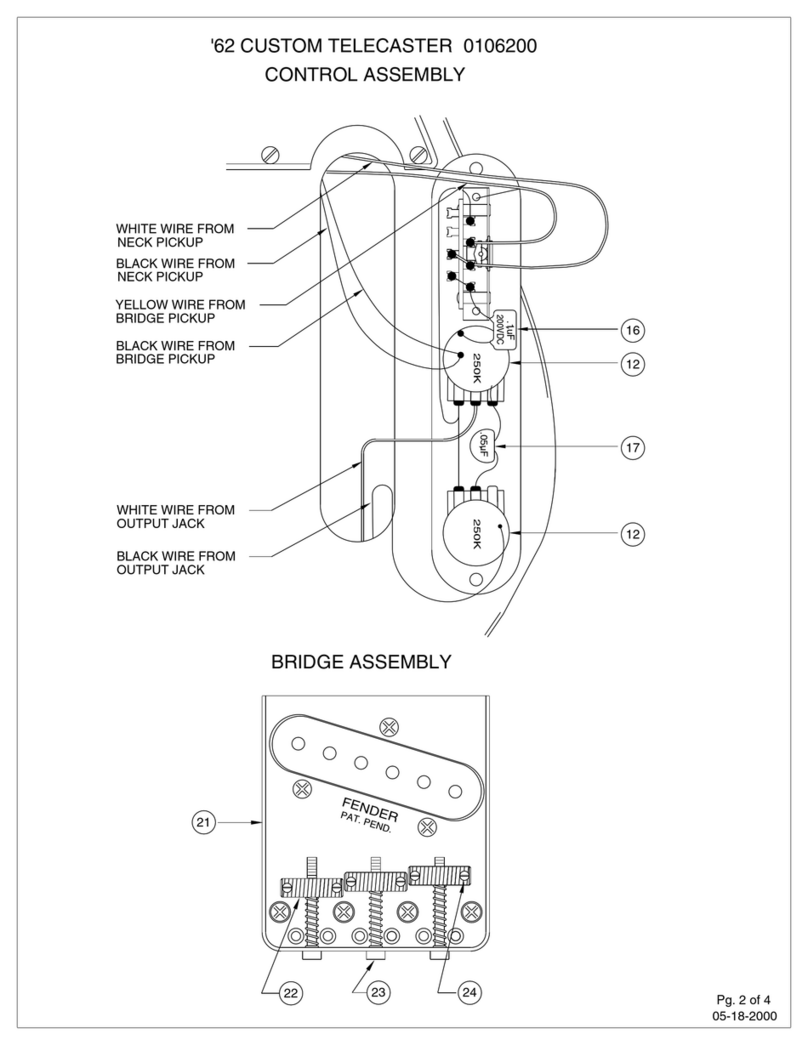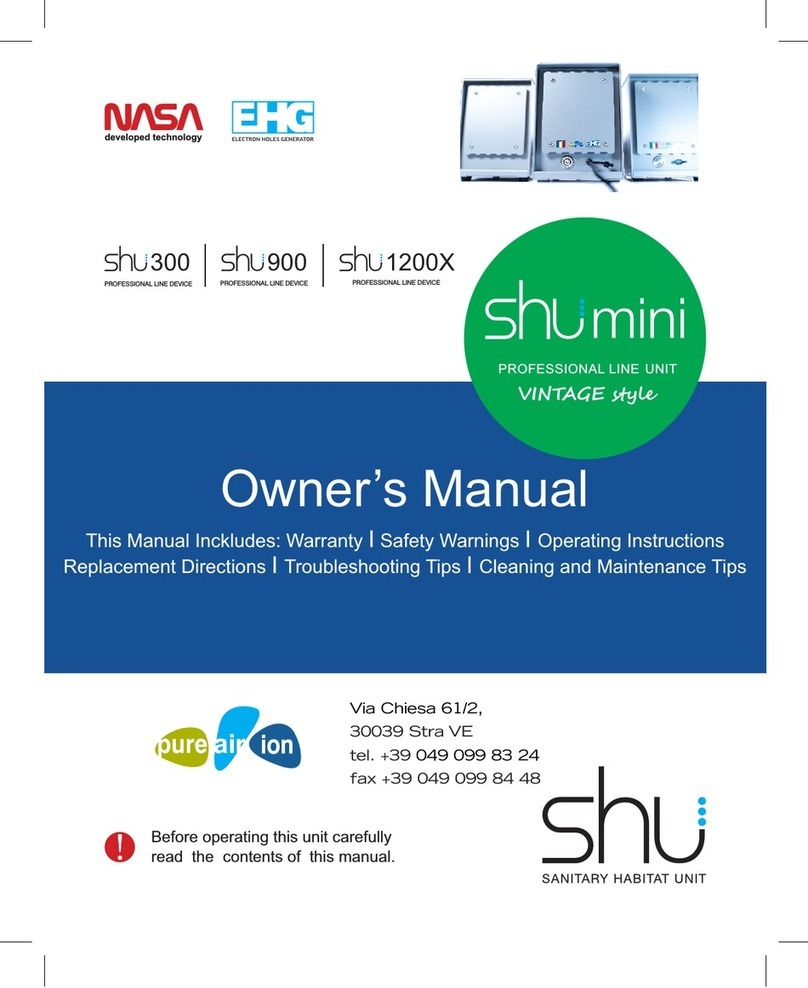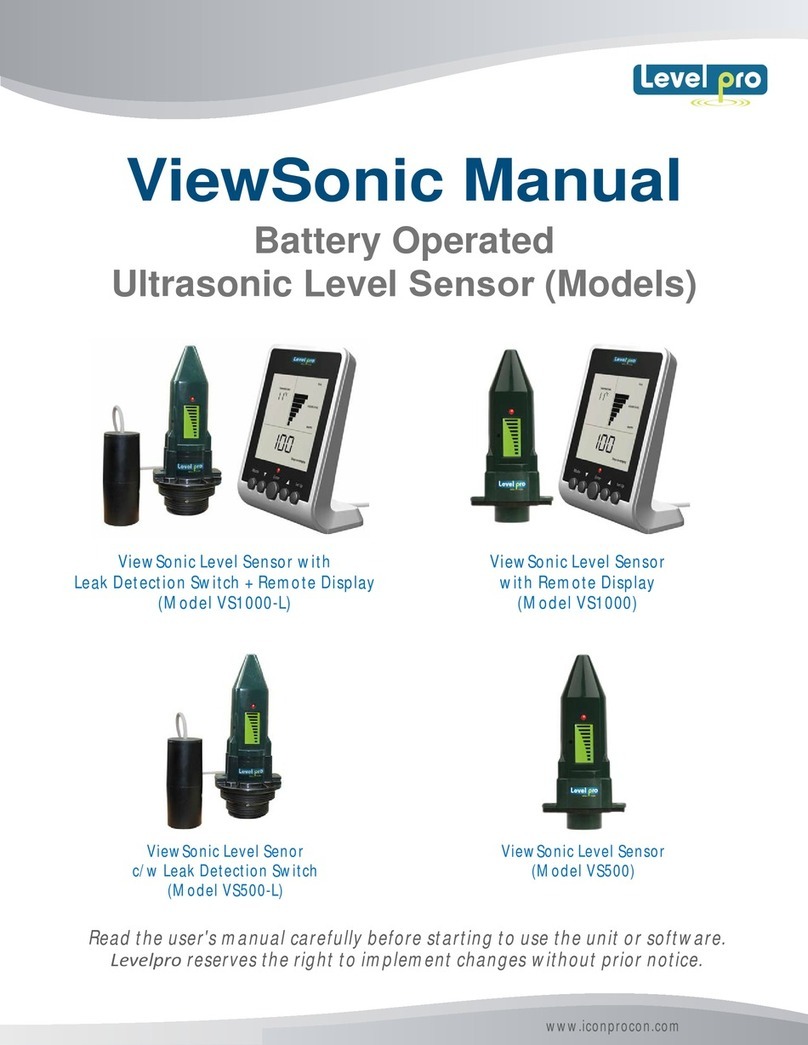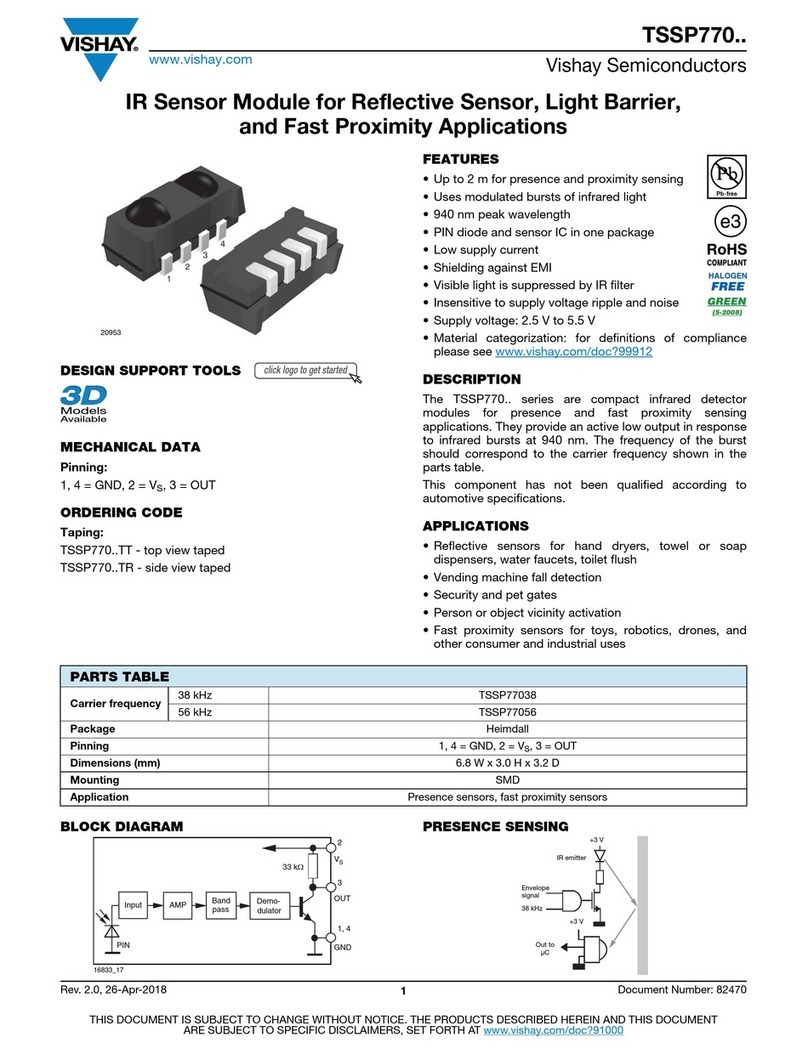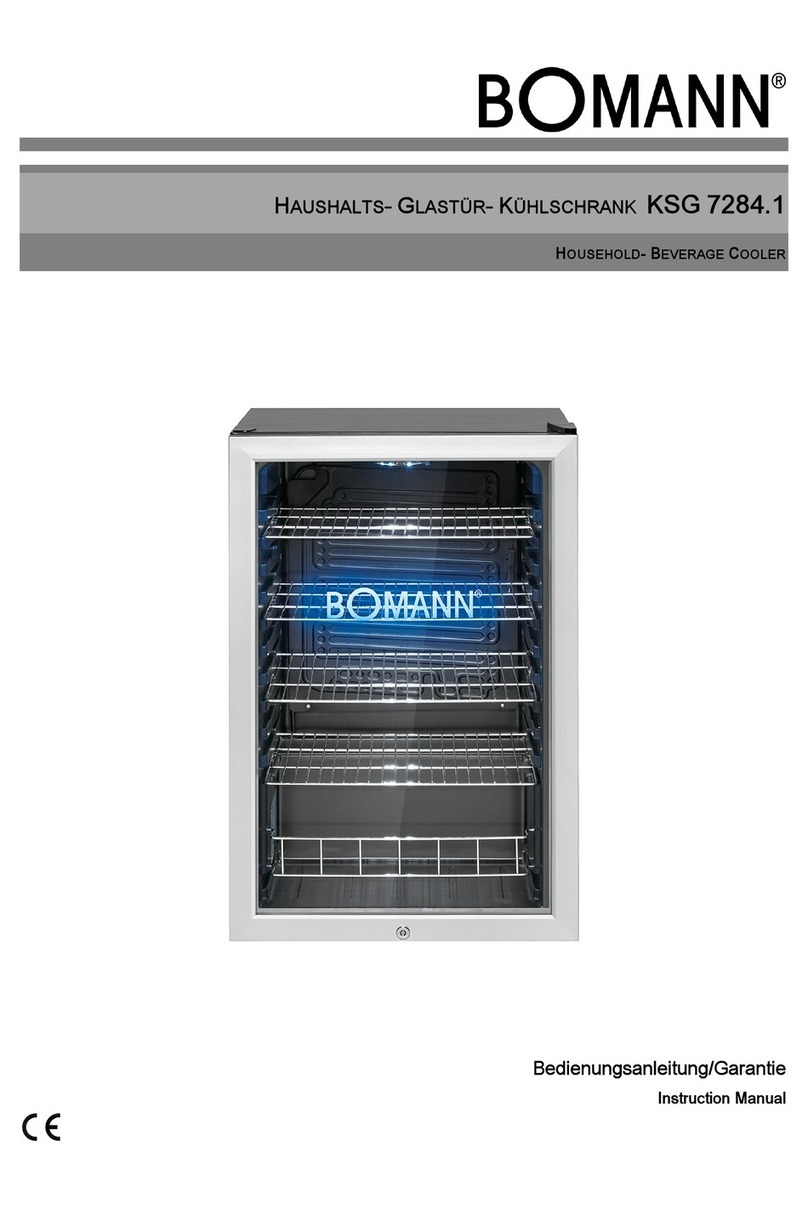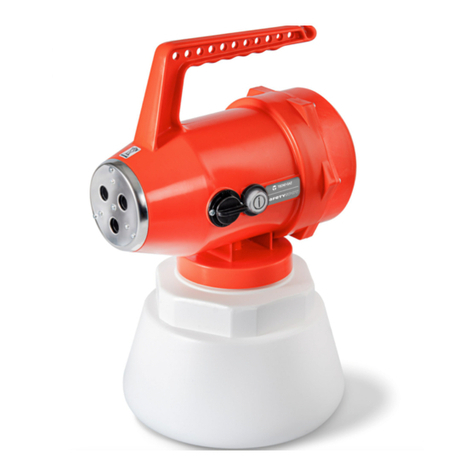sensl C Series User manual

USER MANUAL
C-Series Low Noise, Fast, Blue-Sensitive Silicon Photomultipliers
SensL © 2014 1
Overview
The C-Series SiPM sensors from SensL are based on a P-on-N diode
structure (Figure 1) that results in a high PDE (Photon Detection Efciency)
and sensitivity into the UV.
All C-Series SiPM sensors also feature SensL’s proprietary fast output
terminal (Figure 2), giving access to signals with extremely fast rise times
and short pulse widths.
C-Series SiPM products are available in either MicroSC (2-pin) or MicroFC
(3-pin) versions.
C-Series: Low Noise, Fast, Blue-Sensitive Silicon Photomultipliers
SensL’s C-Series low-light sensors feature an industry-leading low dark-count rate,
combined with high PDE and are available with SensL’s proprietary fast mode output.
Three sensor sizes are available; 1mm, 3mm and 6mm packaged in a variety of formats
including TO-can, ceramic header and 4-side tileable surface mount technology (SMT)
package. In addition, two evaluation boards are available with pre-mounted SMT
sensors to facilitate rapid product evaluation.
This User Manual covers all aspects of using and understanding the C-Series range of
sensors and evaluation boards. More details on the performance characteristics of the
C-Series sensors can be found in the C-Series datasheet.
Figure 2, Simplied microcell level
schematic of the C-Series SiPM.
Figure 1, P-on-N sensor structure
MicroSC
Although all C-Series SiPM sensors have the architecture
shown in Figure 2, MicroSC packaged products only
have two pins giving access to the anode and cathode.
The fast output is not accessible in MicroSC products.
MicroFC
MicroFC packaged products have three (or more) pins,
giving access to the fast output as well as the anode
and cathode. The fast output is the derivative of the
internal fast switching of the microcell in response to the
detection of a single photon.
C-Series

SensL © 2014 2
USER MANUAL
C-Series Low Noise, Fast, Blue-Sensitive Silicon Photomultipliers
SensL © 2014 2
Contents
Overview .......................................................................................................................................................1
Glossary ........................................................................................................................................................3
Biasing and Readout .....................................................................................................................................4
Fast Mode Biasing and Readout of MicroFC Sensors ...........................................................................4
Recommended Fast Mode Readout ............................................................................................4
Fast Output Amplication .............................................................................................................4
Recommended Fast Mode Biasing ..............................................................................................4
Standard Mode Biasing and Readout of C-Series Sensors ...................................................................6
Recommended Standard Mode Biasing .......................................................................................6
Recommended Standard Mode Readout and Amplication .........................................................6
Dual Mode Readout of MicroFC Sensors ..............................................................................................7
Readout of Arrays of SiPM Devices.......................................................................................................8
C-Series Mounted Sensors ............................................................................................................................9
MicroFC-SMA .......................................................................................................................................9
MicroFC-SMTPA .................................................................................................................................10
CAD and Solder Footprint Files ....................................................................................................................11
Handling and Soldering ...............................................................................................................................12
Safe Handling of Sensors....................................................................................................................12
Package Summary .............................................................................................................................12
SMT Package .....................................................................................................................................13
X18 Package ......................................................................................................................................14
X13 Package ......................................................................................................................................14
‘Not Connected’ (NC) Pads and Pins ..................................................................................................14
Further Help ................................................................................................................................................15
Appendix A - Biasing Alternatives & Signal Polarity ......................................................................................16

SensL © 2014 3
USER MANUAL
C-Series Low Noise, Fast, Blue-Sensitive Silicon Photomultipliers
SensL © 2014 3
Glossary
C-Series - A family of SiPM products based upon a P-on-N structure, featuring sensitivity into the UV.
FC - C-Series SiPM product that has at least 3 pins (or pads) accessible that include anode, cathode and the fast
output and can therefore be used in fast mode conguration.
SC - C-Series SiPM product that has only 2-pins accessible, giving access to the anode and cathode. The third
terminal (fast output) is not accessible, and so SC sensors can only work in standard mode.
Fast mode - Using the fast output signal from an FC product for improved timing or photon counting applications.
Standard mode - Using the signal from the anode and cathode for the readout of an SC or FC product where
timing performance is less critical.

SensL © 2014 4
USER MANUAL
C-Series Low Noise, Fast, Blue-Sensitive Silicon Photomultipliers
SensL © 2014 4
Recommended Fast Mode Biasing
The fast output is referenced to the cathode (substrate) of the SiPM. Therefore
the use of a negative bias voltage applied to the anode with cathode at 0V is
recommended, as in Figure 3. The fast mode signal polarity is positive. (If an
application requires the use of a positive bias, refer to the advice in Appendix A.)
Please refer to the C-Series datasheet for the operating over-voltage range.
The observed signals will be very fast, with rise-times ranging from 300ps to 1ns
and pulse widths of 600ps - 3ns (depending on sensor size). A typical output
pulse for a 3mm sensor (MicroFC-30035) is shown in Figure 4.
For all application circuits shown in this User Manual, it is recommended that a
bias voltage lter, such as the one shown in Figure 5, is used.
Alternative biasing schemes are discussed in Appendix A.
Figure 3, Recommended biasing
Biasing and Readout
Recommended Fast Mode Readout
Due to the extreme speed of the signals from the fast output,
care should be taken in the routing of the signal. Common
microwave/RF design rules, such as controlled impedance
microstrip lines, should be used. The capacitance of the fast
output electrode is much lower (of the order of 2-3pF for a
1mm device) than in a standard conguration. The lower
output capacitance does not typically allow the use of a
transimpedance amplier, and instead one can use an RF
style (50Wimpedance) solution including direct connection
to a coaxial cable. The 3mm and 6mm devices have higher
capacitance, so for best operation when connecting to an
oscilloscope or driving long wires, it is recommended that
the fast output be connected to an RF transformer such
as the RFXF9503 as in Figure 7. This provides impedance
matching, to improve amplitude and timing characteristics
of the pulse for 50W impedance. For 1mm devices the
capacitance is low enough to allow direct 50W connection as in Figure 6.
Another feature of the fast output electrode is that it is AC-coupled, with no DC component. However, if needed, one
can combine it with the standard output (see the next section) of the SiPM to incorporate DC information.
Fast Output Amplication
It is important to note that the signal charge injected into the fast output electrode is typically about 2% of the SiPM
charge generated during the avalanche. However, the pulse duration is approximately 100 times shorter, so the
current amplitude observed is about 0.02*100 = 2 times higher. This high current amplitude, in combination with the
signicantly lower output capacitance, make the device suitable for photon counting at very high speed (tens of MHz
and higher has been demonstrated in the lab).
For amplication of the fast signal it is recommended that a low noise 50W RF amplier be used. As with standard
readout, the level of gain required is dependent on the application. For applications with high photon counts it is
recommended that the Mini-Circuits ZX60-43S+ be used. For photon counting applications it is recommended
that the Mini-Circuits ZFL-1000LN+ be used. For PET applications it is possible to obtain both timing and energy
resolution information from the fast output, with the anode and cathode only used for biasing.
Figure 4, Fast mode output (red) of a MicroFB-SMA-30035
when illuminated with a 40ps laser pulse (Photek LPG-
405). ~2.5% of microcells are red in this pulse. Also
shown is part of the standard output pulse, which is shown
in full in Figure 9. Scope input = 50W.
Fast Mode Biasing and Readout of MicroFC Sensors

SensL © 2014 5
USER MANUAL
C-Series Low Noise, Fast, Blue-Sensitive Silicon Photomultipliers
SensL © 2014 5
Figure 7, Recommended fast SiPM readout circuitry for 3mm and 6mm MicroFC
sensors. Also shown is the recommended transformer part number and pin-out
labelling.
Figure 6, Recommended fast SiPM readout circuitry for 1mm MicroFC sensors.
Figure 5, Generic biasing lter, recommended for all circuits given in this User Manual.

SensL © 2014 6
USER MANUAL
C-Series Low Noise, Fast, Blue-Sensitive Silicon Photomultipliers
SensL © 2014 6
Standard Mode Biasing and Readout of C-Series Sensors
For applications that do not require fast timing from the MicroFC, or for the MicroSC products that do not give access
to the fast output signal, SensL’s C-Series sensors will perform as a conventional SiPM. For MicroFC products the
fast output terminal can be left open with no detriment to its standard mode performance. Standard mode signals
may be more suitable for applications involving slow pulses or slowly-varying, continuous light levels, such as in
luminometers or for gamma-ray spectroscopy with slow or low-light scintillators.
Recommended Standard Mode Biasing
Figure 8 below shows the standard mode biasing conguration. For MicroFC sensors the fast output electrode
is left open (unconnected). For all C-Series sensors read out in standard mode, the cathode should be held at a
positive bias with reference to the anode. It is recommended that the signal is taken from the side of the sensor held
at 0V. Reading out in this way yields a pulse that has a rise time of 1ns-10ns and a decay time of several hundred
ns (depending on sensor and microcell size). A typical standard mode output pulse shape is shown in Figure 9.
Alternative biasing schemes are discussed in Appendix A.
Recommended Standard Mode Readout and
Amplication
Figure 10 shows how the C-Series devices can be connected
to a standard high speed amplier, such as the OPA656, to
convert the standard mode output signal current to a voltage.
This technique is recommended for standard mode readout
of all SensL SiPM devices. In the case of MicroFC devices the
fast output can be left open.
Figure 8, Biasing for standard mode. The cathode
should be positive with respect to the anode, but
either a positive or negative bias can be used.
Figure 9, Standard output signal (blue) from a MicroFC-
SMA-30035 when illuminated with a 40ps laser pulse (Photek
LPG-405). ~2.5% of microcells are red in this pulse. Also
shown is the fast output (red) from the same pulse. Scope
input = 50W.
Figure 10, Example readout circuit for standard mode.
When the fast output is not in use it should
be left oating. Do not connect it to ground
or have any wires or cables connected to it.

SensL © 2014 7
USER MANUAL
C-Series Low Noise, Fast, Blue-Sensitive Silicon Photomultipliers
SensL © 2014 7
Dual Mode Readout of MicroFC Sensors
It is possible to read out both fast and standard outputs simultaneously from the sensor to obtain two separate
signals. This can be used for obtaining timing (fast output) and amplitude information (standard output) from separate
channels. This could be useful for applications such as PET (Positron Emission Tomography) where timing and
energy information are required from each photon pulse. Note that this is only possible with MicroFC sensors. AC
and DC coupled options for connecting the device for dual readout are shown in Figures 11 and 12.
Figure 12, AC coupled readout option.
DC information from the SiPM is lost
but the pulse amplitude is maintained
through the transimpedance amplier
(TIA).
Figure 11, DC coupled readout option.
The standard output is amplied
through a transimpedance amplier
(TIA).

SensL © 2014 8
USER MANUAL
C-Series Low Noise, Fast, Blue-Sensitive Silicon Photomultipliers
SensL © 2014 8
Readout of Arrays of SiPM Devices
Many applications require the use of multiple sensors in the form of an array, such as the SensL ArrayC line of
products. Large arrays can pose a readout challenge due to the many channels of amplication and processing
that are required. Therefore, methods of reducing the number of channels are often employed in order to reduce the
readout requirements. Many examples of this can be found in the literature, and SensL has extensive experience in
developing solutions for array readout, as demonstrated by the Matrix family of products. A Tech Note is available
on the subject of large area array readout.
Figure 13, Third option for dual readout that is employed on the SensL -SMA and
-SMTPA evaluation boards. Further information on using a positive bias is given in
Appendix A.
A third option for simultaneous readout of the standard and fast outputs provides a DC coupled standard output signal, and
preserves the ability to read out the fast output. The decoupling capacitor from the cathode to 0V is critical to provide a return
path for the fast output. This circuit is used on the SensL -SMA and -SMTPA evaluation boards. SensL recommend the -Vbias
readout options from Figures 11 and 12 for most system designs. Alternative biasing schemes are discussed in Appendix A.

SensL © 2014 9
USER MANUAL
C-Series Low Noise, Fast, Blue-Sensitive Silicon Photomultipliers
SensL © 2014 9
C-Series Mounted Sensors
Some C-Series sensors are available ready mounted on test boards, to allow for easy evaluation. The SMA and
SMTPA were designed for evaluation of fast output with a DC-coupled standard output. The SMA board is congured
for use with the circuit shown in Figure 13 and the SMTPA can also be congured in this way with the use of an
external decoupling capacitor and sense resistor. Note that the 3mm and 6mm versions of the SMA and SMTPA
have baluns at their fast outputs for signal shaping and impedance matching. The use of these boards is detailed in
the following sections.
MicroFC-SMA
The MicroFC-SMA-XXXXX product line (Figure 14) features either an SMT or X18 packaged SiPM sensor (type
specied by the XXXXX digits) soldered onto a small PCB board. The board is simple to use, having just three SMA
(female) connectors: one delivers the bias voltage (Vbias) and the other two provide the output signals: standard
output from the anode (Sout) and the fast output (Fout). The circuitry on the board is designed to bias the sensor in
such a way as to retain the optimum high-speed performance. A typical output pulse is shown in Figure 4 which was
taken from a MicroFC-SMA-30035. The circuitry used is as given in Figure 13 with the addition of a bias lter (Figure
5) and transformer on the fast output of the 3mm and 6mm versions (Figure 7). For the complete circuit schematics,
please consult the SMT Board Reference Design document. For links to the full CAD les, see page 11.
Output Connector Function Comments
Vbias Standard female
SMA connector
bias input (cathode) positive bias input
Fout fast output if unused can be left open
Sout standard output (anode) if unused can be left open
Table 1, SMA Connections
The MicroFC-SMA is recommended for users who require a plug-and-play set-up to quickly evaluate MicroFC
sensors with optimal timing performance. The board provides outputs which can be connected directly to the
oscilloscope or measurement device. The board also allows the standard output from the anode to be observed
at the same time as the fast output. Table 1 summarizes the connections to the SMA board. Each board has two
mounting holes to allow secure placement during testing, with sensors located at the edge of the board. This allows
two sensors to be placed in close proximity for coincidence timing measurements.
Figure 14, The MicroFC-SMA board: 3mm SMT version
Bias
Fast
output
SMT
sensor
Mounting
holes
Standard
output

SensL © 2014 10
USER MANUAL
C-Series Low Noise, Fast, Blue-Sensitive Silicon Photomultipliers
SensL © 2014 10
MicroFC-SMTPA
The C-Series SMT Pin Adapter board (SMTPA) is a small PCB board that houses the sensor and has through-hole
pins to allow its use with standard sockets or probe clips. This product is useful for those needing a quick way
to evaluate the SMT packaged sensors without the need for specialist surface-mount soldering. While this is a
‘quick x’ suitable for many evaluations, it should be noted that the timing performance from this board will not be
optimized and if the best possible timing performance is required, the MicroFC-SMA-XXXXX is recommended. The
pinout numbering is shown in Figure 15 and dened in Table 2. Please consult Appendix A for information on biasing.
The circuit schematic for the 3mm and 6mm versions is shown in Figure 16 and does not contain any on-board
decoupling on the bias line. Therefore, a bias lter, such as that in Figure 5, should be included on the bias line
before connecting to the relevant bias input pin (see Table 2). The output can be connected directly to an amplier or
50W load oscilloscope. The full electrical schematics are available to download in the SMT Board Reference Design
document.
Due to the presence of the pins on the SMTPA board, it is not optimal for evaluation testing where timing with the
fast output signal is critical. For evaluations where the timing performance of the fast output is critical, the use of the
SMA board is recommended.
The connectors from Samtec used are:
BBL-103-G-E
BBL-102-G-E
Compatible sockets from Samtec are:
SL-103-G-10
SL-102-G-10
Figure 16, SMTPA circuit schematic for the 3mm and 6mm board. The
1mm version does not have the balun.
MicroFC-SMTPA-XXXXX
Pin No. Connection
1 anode
2 fast output
3 cathode
4 ground
5 no connect
Figure 15, SMTPA pin numbering
Table 2, SMTPA board pin-outs

SensL © 2014 11
USER MANUAL
C-Series Low Noise, Fast, Blue-Sensitive Silicon Photomultipliers
SensL © 2014 11
CAD and Solder Footprint Files
MicroFC-60035-SMT-C1 CAD and solder footprint, C1 revision (see the PCN for details).
MicroFC-300XX-SMT-C1 CAD and solder footprint, C1 revision (see the PCN for details).
MicroFC-300XX-SMT-A1 CAD and solder footprint, A1 revision (see the PCN for details).
MicroFC-100XX-SMT-A1 CAD and solder footprint, A1 revision (see the PCN for details).
MicroFC-100XX-SMT-C1 CAD and solder footprint, C1 revision (see the PCN for details).
MicroFC-SMA-60035 CAD.
MicroFC-SMA-300XX CAD.
MicroFC-SMA-100XX CAD.
MicroFC-SMTPA-60035 CAD.
MicroFC-SMTPA-300XX CAD.
MicroFC-SMTPA-100XX CAD.
MicroFC-100XX-X18 CAD: Please refer to the package drawings in the C-Series datasheet
MicroFC-300XX-X13 CAD: Please refer to the package drawings in the C-Series datasheet
MicroFC-600XX-X13 CAD: Please refer to the package drawings in the C-Series datasheet

SensL © 2014 12
USER MANUAL
C-Series Low Noise, Fast, Blue-Sensitive Silicon Photomultipliers
SensL © 2014 12
Handling and Soldering
Safe Handling of Sensors
• When unpacking, care should be taken to prevent dropping or misorienting the sensors. The specic items
contained in the package and the type of packaging will depend on the parts ordered.
• Remember that the SiPM is a sensitive optoelectronic instrument; always handle the sensor as carefully as
possible.
• The sensor should be disconnected from the bias supply when not in use.
• SiPM sensors are ESD sensitive. The following precautions are recommended:
• Ensure that personal grounding, environmental controls and work surfaces are compliant with
recommendations in JESD625.
• Ensure that all personnel handling these devices are trained according to the recommendations in
JESD625.
• Devices must be placed in an ESD approved carrier during transport through an uncontrolled area.
Package Summary
Table 3 summarizes packages and product type. In the following sections, handling and soldering advice is given
for each package type.
Package type Delivery option
code Product type MSL* Reow Solder?
SMT - Tape & Reel TR FC 3 Y
SMT - Cut Tape TA FC 4 Y
SMT - Other WP, GP FC N/A Y**
X18 PK FC N/A N
X13 PK SC N/A N
Table 3, Summary of which package types are associated with which product type.
* See Table 4 for denition
** Sensors shipped in either a wafe pack (WP) or gel pack (GP) require a bake according to J-STD-20, prior to reow
soldering

SensL © 2014 13
USER MANUAL
C-Series Low Noise, Fast, Blue-Sensitive Silicon Photomultipliers
SensL © 2014 13
SMT Package
A dedicated SMT Handling and Soldering Tech Note is available that contains in depth information on the storage
and use of the SMT parts, including the CAD for the tape and reels.
The SMT package is compatible with standard reow solder processes (J-STD-20) and so is ideal for high volume
manufacturing. The recommended solder footprints are included in the downloadable CAD les that are listed on
page 11. If the SMT part is being assembled into an array, the advice below and in the SMT Array Tech Note should
be followed.
SMT SiPM sensors are shipped in moisture barrier bags (MBB) according to the J-STD 033 standard. An unopened
MBB should be stored at a temperature below 40OC with humidity below 90%RH. After the MBB has been opened,
the devices must be reow soldered within a period of time depending on the moisture sensitivity level (MSL). SensL
SMT Tape & Reel are MSL 3, cut tape SMT are MSL 4 and SMT sensors shipped in trays require a bake prior to
reow soldering. See Table 4 for details.
Delivery Format MSL Exposure time Condition
Tape and reel 3 168 hours
≤30 °C/60% RH
Cut tape and partial reels 4 72 hours
Table 4, MSL denitions applicable to SensL products (reference J-STD 020).
Exposure to solvents such as concentrated isopropyl alcohol (propan-2-ol) or commercial ux removal uids such
as Fluxene will cause severe, irreversible damage to the MLP packages. If cleaning is necessary, a 20% solution of
isopropyl alcohol can be used. Futher details on cleaning can be found in the SMT Handling Guide.
Creating Arrays of SMT Sensors
If multiple SMT parts are to be mounted in close proximity (e.g. 1D or 2D arrays), the following recommendations
may be helpful. By following this recommendations, a planarity of 0.09% to 0.53% can be achieved.
• Minimum spacing between SMT parts of 200mm.
• Use of FR4 PCB as the substrate material
• Use commercial automatic placement machines to achieve the necessary placement accuracy to
give the above spacing and planarity.
• Take into account the MSL 3 specications of the SMT devices when assembling.
• Hold the PCB board in a rigid frame to avoid warping due to the heat process.
• The user can refer to the additional Tech Note on this subject.
All SMT shipped on tray do not have an MSL rating and should be baked prior to placement on PCB.
Please discuss this with your contract manufacture for their recommended baking cycle which adheres
to IPC/JEDEC J-STD-20 MSL Classication. Note the temperature of the bake should not exceed the
recommended operating temperature of the product listed in product’s datasheet.

SensL © 2014 14
USER MANUAL
C-Series Low Noise, Fast, Blue-Sensitive Silicon Photomultipliers
SensL © 2014 14
X18 Package
The X18 (TO-18 can) package has through-hole pins and hand-soldering is recommended. The SiPM can be
damaged by excessive heat and so it is important that due care be given to temperature and dwell time when
soldering the X18 products. A maximum temperature of 260oC for no more than 10 seconds is recommended.
More details can be found in the Hand Soldering Guide Tech Note.
X13 Package
The X13 ceramic package has through-hole pins and hand-soldering is recommended. The SiPM can be
damaged by excessive heat and so it is important that due care be given to temperature and dwell time when
soldering the X13 products. A maximum temperature of 260oC for no more than 5 seconds, applied at a
distance of 2mm from the ceramic base is recommended. More details can be found in the Hand Soldering
Guide Tech Note.
‘Not Connected’ (NC) Pads and Pins
Common PCB design practice is to ground any oating pins or pads such as those labelled ‘NC’. Grounding the
pin helps shielding and can reduce noise interference from external sources (EMI/RF).

SensL © 2014 15
USER MANUAL
C-Series Low Noise, Fast, Blue-Sensitive Silicon Photomultipliers
SensL © 2014 15
Further Help
If more help is required in the set-up or operation of C-Series sensors, there are several SensL resources that can
help.
• The C-Series Datasheet contains more detailed information on the physical and performance characteristics of
the sensors.
• A variety of Tech Notes are available on the website, www.sensl.com, such as:
• A guide to handling and soldering SMT packages.
• A guide to hand soldering through-hole SensL sensor products.
• Reference design document for the SMA and SMTPA boards.
• A guide on creating arrays of close-packed SMT sensors.
• An extensive library of technical and scientic papers on the use of SensL SiPM sensors.
• If additional help is needed, please contact [email protected]

SensL © 2014 16
SensL © 2014 16
USER MANUAL
C-Series Low Noise, Fast, Blue-Sensitive Silicon Photomultipliers
Rev. 2.0 March 2017
www.sensl.com
+353 21 240 7110 (International)
+1 650 641 3278 (North America)
SensL © 2014 16
All specications are subject to change without notice
Appendix A - Biasing Alternatives & Signal Polarity
This Appendix lists all of the possible ways in which a C-Series SiPM can be biased. For each biasing arrangement,
the standard and fast signal polarities are given. A and B are the recommended con gurations. C and D will work,
but are not recommended for use with the fast output. The following abbreviations are used throughout:
Vbias = bias voltage
Sout = standard output
Fout = fast output
Rs = load resistor for the standard output
Rf = load resistor for the fast output
Vs = standard output voltage
Vf = fast output voltage
RQ = quench resistor (included on the SiPM die)
AB
CD
Table of contents
Other sensl Accessories manuals
